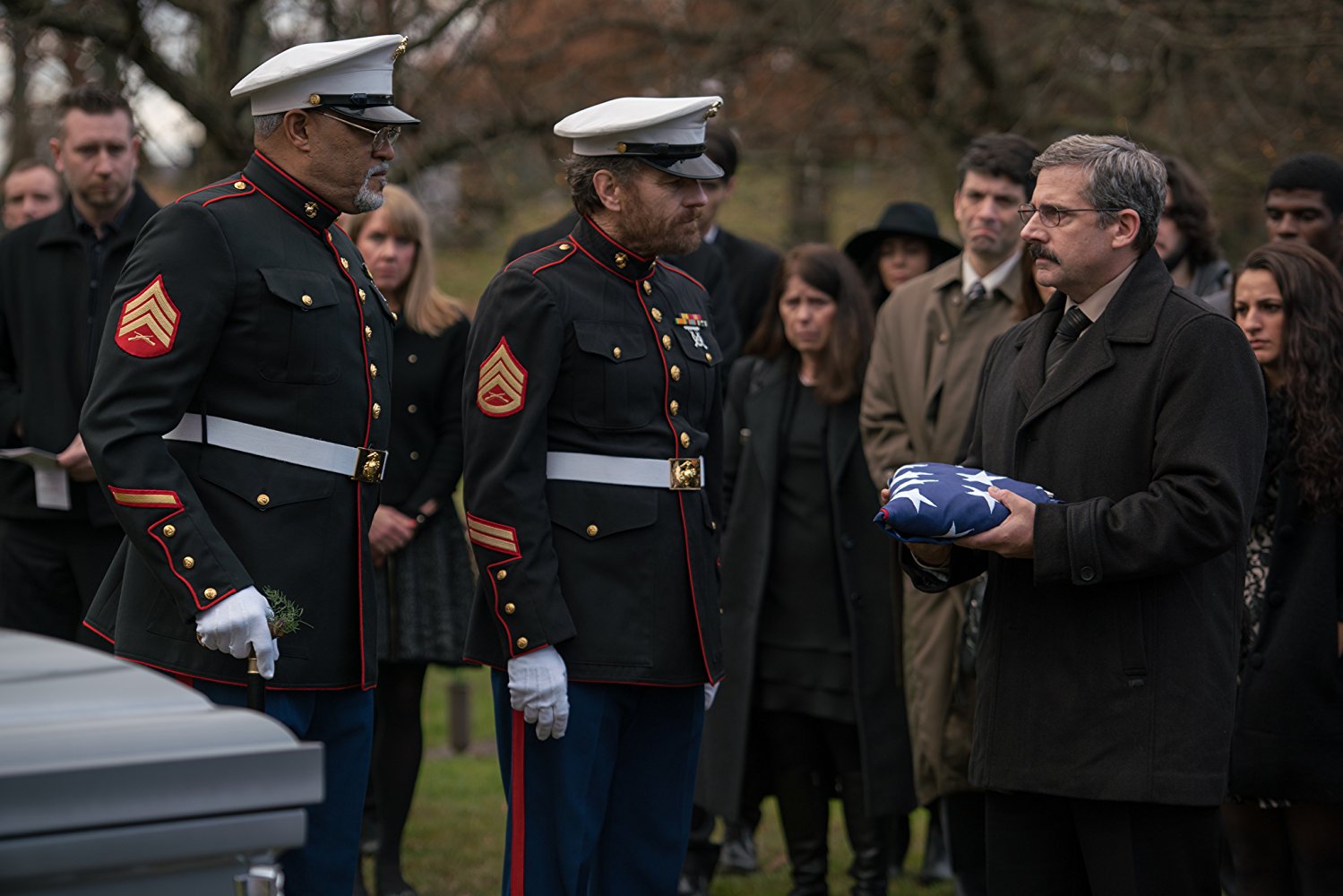
'Last Flag Flying' exploits layers of writing with fine acting
By Martha K. Baker
Something -- memories of esprit de corps, desperation, loneliness -- draws Doc Shepherd to find his old Marine buddies on the Internet. He has an agenda: he wants them to go with him to bury his son, also a Marine but killed in another war. Doc finds Sal, running a failing bar.
Then Doc directs Sal to church because that's where Richard is preaching the Word. It's the last thing either Doc or Sal expected of a buddy who drank and cursed and smoked weed through the Viet Nam war. The three old friends start out on this journey in 2003, a journey that ends beside a grave.
The story of that journey was scripted by the director of Last Flag Flying, Richard Linklater, and by Darryl Ponicsan, known mostly for his early military works, The Last Detail and Cinderella Liberty. The two men march the three Marines on a trip through the past, through bureaucracy, through manhood and aging. They traipse heavily over lies and secrets.
The most mournful of the trio is Doc, who has also recently buried his wife. As played by Steve Carell, Doc personifies the sad, lost man. Bryan Cranston plays the player, the drunk, the joker, and Laurence Fishburne is the preacher-man, remorseful and upright but provokable to the past. Each man lives inside his role and wears it well, but each could easily have played either of the other two roles. Cicely Tyson's cameo is poignant.
Last Flag Flying is not a film about camera angles or about light and shadow, although Linklater directs those aspects as befits his reputation from his "Before" series. It is a literate film about character and plot, about the creases of time and the pressure of paths, some more wayward than others. Last Flag Flying provides broad brush strokes and nuances and rewards with every line, whether comic or tragic.


